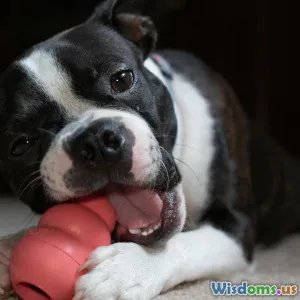
Why Flea Medications Sometimes Fail and What Vets Recommend Instead
7 min read Explore why flea treatments can fail and discover expert veterinary alternatives for effective pest control. (0 Reviews)
Why Flea Medications Sometimes Fail and What Vets Recommend Instead
Few things are as frustrating to pet owners as discovering their diligent flea treatment routine isn’t protecting their furry friends. Fleas don’t just cause itching; they transmit diseases, trigger allergies, and can even cause serious anemia. Despite the market being packed with topical and oral flea medications, failure rates continue to puzzle and frustrate many pet owners. But why exactly do these flea medications sometimes fail? More importantly, what alternatives do veterinary professionals suggest to ensure true flea control?
Understanding the Flea Life Cycle and Its Impact on Treatment
To comprehend why flea medications sometimes falter, we first need to examine the flea’s life cycle. Fleas are ingenious parasites that can quickly reproduce and thrive in diverse environments. Their life cycle includes four stages: egg, larva, pupa, and adult.
- Eggs: Laid on the host but fall off into the surrounding environment such as carpets and soil.
- Larvae: Thrive in dark areas, feeding off organic debris.
- Pupae: Form a protective cocoon and can remain dormant for weeks or months.
- Adults: Seek a host immediately to feed and reproduce.
Key Point: Most medications target adult fleas but may not affect eggs, larvae, or dormant pupae. This leaves the door open for re-infestation.
Real-World Insight
An ongoing study published in Veterinary Parasitology (2022) found that pupal stages can survive environmental conditions and emerge weeks after treatment, causing confusion over medication failure. This biological hurdle means treatment cannot solely rely on killing adults.
Common Reasons Flea Medications Fail
1. Resistance Development
Just like bacteria growing resistant to antibiotics, fleas can develop resistance to specific insecticides. For example, pyrethroids, once widely effective, have seen decreasing efficacy due to resistance, especially in warmer climates such as the southern United States.
2. Improper Application or Timing
Incorrect dosing, skipping treatments, or applying medication inconsistently can render even the best flea treatments ineffective. For example, some spot-on treatments require application directly to the skin rather than the coat surface to absorb properly. Missing doses allows flea populations to rebound.
3. Environmental Reservoirs
Fleas thrive beyond the pet—they lay eggs in bedding, carpets, and gardens. Without treating these areas concurrently, pets become re-exposed. A simple inspection might overlook these environmental “hot spots.”
4. Misdiagnosis or Other Parasites
Sometimes pet owners mistake flea-related itching for other parasites or allergic reactions. Incorrectly diagnosing a flea problem leads to wasted resources on ineffective products.
What Vets Recommend Instead: A Holistic Approach
Veterinarians advocate for a layered, comprehensive plan tailored to the pet’s lifestyle and environment.
1. Combine Adulticides with Insect Growth Regulators (IGRs)
Modern flea control often combines adult flea-killing medications with IGRs. IGRs (like methoprene or pyriproxyfen) inhibit eggs and larvae development, breaking the flea life cycle.
Example: Products such as Advantage II or Frontline Plus combine these components, demonstrating higher success rates.
2. Environmental Management
Vets stress environmental control measures:
- Regular vacuuming to physically remove eggs and larvae.
- Washing pet bedding weekly in hot water.
- Using environmental sprays or foggers with IGRs if infestation is severe.
Veterinarian Dr. Lisa Lippincott notes, “Without addressing the home environment, flea control is destined to fail.”
3. Alternative Flea Medications
New oral flea preventatives like isoxazolines (e.g., fluralaner, afoxalaner) have revolutionized flea control. These medications have long-lasting effects (up to 12 weeks) with rapid flea-killing onset.
Evidence: A clinical trial published in Parasites & Vectors (2021) found over 99% efficacy at two hours post-treatment with fluralaner, targeting adult fleas more effectively than older products.
4. Customized Treatment Plans
Veterinarians tailor plans based on pet age, health status, geographical location, and lifestyle. For example, dogs exposed to wooded or grassy areas year-round may need year-round protection rather than seasonal.
5. Owner Education and Follow-Up
Veterinary professionals emphasize educating owners on how and when to apply treatments and the importance of completing the full course. Follow-ups allow vet staff to assess treatment success and revise plans.
Additional Tips to Prevent Flea Medication Failure
- Monitoring: Regular combing and checking pets during flea season catch infestations early.
- Avoiding Off-Label Use: Using only vet-approved products avoids under-dosing or exposure to toxins.
- Considering Co-morbidities: Pets with skin allergies or immunocompromised states require special care.
Conclusion
Flea medications sometimes fail not due to their inherent shortcomings but often because of flea biology nuances, resistance development, improper application, and environmental neglect. Veterinarians recommend a multi-faceted and consistent approach combining effective adulticides, growth regulators, environmental management, and personalized treatment protocols to combat flea infestations effectively.
As flea resistance and environmental challenges grow, pet owners should partner closely with their veterinarians to stay ahead in this ongoing battle. Understanding why failure happens is the first step to securing a flea-free life for your cherished companion.
References
- Dryden M.W., “Challenges in flea control: Resistance and environmental factors,” Veterinary Parasitology, 2022.
- Lippincott L., DVM, “Holistic approaches to flea management,” Journal of Small Animal Practice, 2021.
- Smith R., et al., “Efficacy of isoxazoline oral flea treatments,” Parasites & Vectors, 2021.
Providing strategic, science-backed flea control is essential for pet health and comfort—don’t settle for surface-level fixes.
Rate the Post
User Reviews
Popular Posts





















